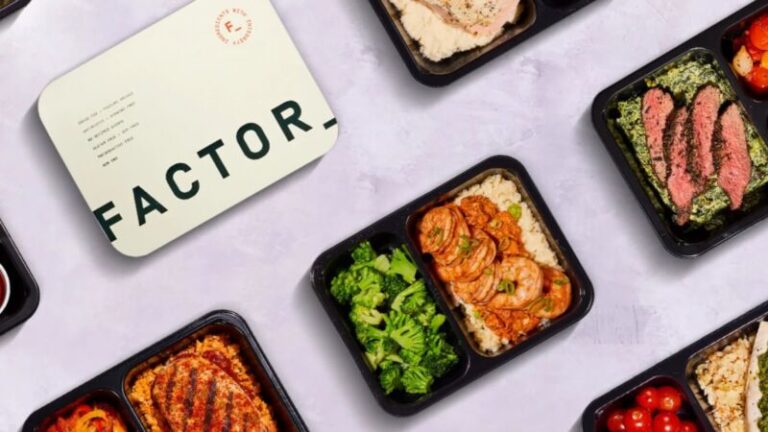What Happens If You Eat Bad Pineapple?
Pineapple is a delicious and nutritious tropical fruit enjoyed around the world. However, what happens if you eat bad pineapple that is past its prime? Consuming spoiled pineapple can potentially lead to some unwanted effects. In this article, I’ll discuss how to identify bad pineapple, the possible risks and impacts of eating it, key food safety precautions, and what to do if you accidentally eat pineapple that has gone off.
Recognizing the Signs of Bad Pineapple
It’s important to educate yourself on how to spot the indicators of bad pineapple, so you can avoid eating it. Here are some of the main signs that can signal a pineapple is spoiled and unsafe to eat:
Color Changes
As pineapple ripens, its color shifts from green to yellow or orange. Once a pineapple is picked, the chlorophyll starts to break down. This causes the skin to turn from green to more yellow or orange shades.
However, if the color starts to brown or turn extremely dark, this is a red flag. Dark brown, orange or black shading on a pineapple typically means it is overripe and spoiled. The flesh will likely be soft and mushy as well. Always inspect the overall color and avoid pineapples that are mostly brown, black or grayish.
Unpleasant Smells
A fresh, ripe pineapple should have a sweet, tropical aroma. An extremely pungent, vinegar-like or fermented smell is a major indicator of spoilage.
If you sniff a pineapple and detect an off, sour or alcohol-like odor, it is likely bad. Trust your nose, as the stench of rotten pineapple is very distinct. Avoid any pineapples that smell unpleasant or odd.
Soft, Soggy Texture
Feel the pineapple’s skin and spikes. The rind should be firm with crisp, rigid spikes. Pressing into the base and sides should meet some resistance from the inner flesh.
If the pineapple feels very soft and spongy or any indentations remain when pressed, this suggests spoilage. Soggy, mushy or bruised spots signal the fruit is overripe and unsafe to consume. Texture changes like softness, sogginess or mold indicate a pineapple has gone bad.
Bitter, Unusual Taste
A fresh, ripe pineapple will taste sweet and tart, with tropical essence. If you cut into a pineapple and the flesh is very dry and fibrous or has a bitter, acidic or chemical taste, stop eating it.
An odd or bitter flavor can signify that fermentation or spoilage has begun. Off tastes in pineapple mean it should not be consumed. Trust your instincts if the flavor seems questionable or not right.
Dry, Withered Leaves
Inspect the leaves towards the crown of the pineapple. The leaves should look plump and green, with minimal brown tips or edges. Dry, shriveled leaves that appear wilted or dead suggest the pineapple is old.
Pineapples with dried out, withered leaves should be avoided, as this signals loss of freshness. The leaves give a vital clue about the age and storage conditions. Only choose pineapples with vibrant, lively looking leaves.
Visible Mold
Check pineapples closely for any blue, green or white fuzz. The presence of mold suggests moisture buildup and spoilage. Parts that touch the ground while growing are most prone to developing mold.
Do not purchase or eat any pineapples with visible mold growth. Even if you remove the moldy parts, toxins may have spread to other areas of the fruit. Mold means the pineapple should be discarded completely.
What Happens If You Eat Bad Pineapple?
Consuming spoiled, old or rotten pineapple can put your health and well-being at risk:
Food Poisoning
Eating pineapples contaminated with bacteria, yeasts or molds can result in food poisoning. Staphylococcus, salmonella and listeria are examples of hazardous bacteria that can grow on old pineapple.
Symptoms like vomiting, diarrhea, nausea, fever and stomach cramps can begin 12-48 hours after ingesting bad pineapple. Food poisoning can last several days and lead to dehydration or hospitalization in severe cases.
Bacterial Infections
Bacteria present on spoiled pineapple can also cause illness if ingested. E. coli, staphylococcus and streptococcus bacteria are sources of contamination and infection. Diarrhea, abdominal pain and vomiting may develop.
Improper handling, storage and hygiene practices also increase bacteria growth on pineapple. Contaminated pineapple invites risks of bacterial infections. Always implement food safety measures when handling cut pineapple.
Allergic Reactions
Some people have oral allergy syndrome or allergies to pineapple enzymes like bromelain. Those with known pineapple allergies may experience tingling, swelling or irritation when consuming bad pineapple with high bromelain content.
Be cautious of pineapple allergies. Symptoms like itching, rashes, vomiting or stomach pain can signal an allergic reaction. Seek medical help immediately if serious allergic signs occur after eating old or unripe pineapple.
Digestive Problems
The fruit acids and insoluble fiber content may be higher in spoiled pineapple. Consuming it can irritate the mouth, throat and digestive tract. Stomach discomfort, bloating, gas and diarrhea could result.
Overly fermented or unripe pineapple is hard to digest properly. Eating old pineapple pieces may cause loose stools, stomach pain and intestinal issues due to the high acidity. Allow pineapple to properly ripen before consumption.
Loss of Nutrients
Fresh, ripe pineapple contains beneficial vitamins like vitamin C, folate, thiamine and antioxidants. However, nutrient values can diminish as the fruit decays. Nutritional losses occur over time and with spoilage.
Consuming spoiled pineapple means you’ll miss out on the vital nutrients. Only eat fresh, recently harvested pineapples to gain the highest vitamins, minerals and nutrients. Avoid old, bruised or discolored pieces.
Proper Storage and Handling of Pineapple
You can avoid the dangers of bad pineapple by taking measures to store it correctly:
Refrigerate Properly
Keep fresh-cut pineapple refrigerated, as the cold temperatures slow spoilage. Place pineapple pieces in an airtight container or bag, removing excess air. The fridge maintains humidity to prevent drying.
Refrigerate diced or sliced pineapple within 2 hours of cutting. Whole, uncut pineapples can be stored at room temperature up to 5-7 days maximum. Refrigeration can extend the life of fresh pineapple for 5-7 more days.
Monitor Conditions
Inspect pineapples, including refrigerated pieces, daily. Check for visible mold, foul odors and texture changes indicating spoilage. Never eat pineapple that smells bad or has mold on it. Promptly discard any decayed parts.
Be diligent about checking for signs of deterioration or rotting. Off-odors, sogginess and brown spots typically precede full spoilage. Identify and toss problematic pieces before they ruin the entire batch.
Wash Thoroughly
Prior to preparing or cutting, wash pineapples well under cool running water. Scrub the outer rind briskly with a produce brush to remove grime and surface bacteria. Blot dry thoroughly with paper towels.
Washing pineapple helps decrease potential contaminants. Always clean pineapples, hands, utensils and surfaces thoroughly before and during slicing to enhance food safety.
Inspect Canned Products
Examine canned pineapple packaging for any indentations, rust, bulges or leakage that could compromise the seal. Avoid cans that are heavily dented, swollen or leaking.
Once opened, transfer canned pineapple to an airtight container. Refrigerate leftover portions promptly and consume within 5 days. Discard any discolored, mushy or oddly smelling canned pieces.
What To Do If You Eat Bad Pineapple
If you accidentally consume rotten, moldy or spoiled pineapple, here are some tips to manage the aftermath:
Watch for Symptoms
Be alert for signs of a reaction in the hours following ingestion. Nausea, stomach cramps, vomiting and diarrhea are common symptoms. Headache, chills and fever could also develop if bacteria or toxins were present.
Food poisoning symptoms generally begin 6-48 hours after eating contaminated pineapple. Seek medical treatment promptly if you experience severe symptoms like bloody stools, uncontrolled vomiting or high fever.
Contact Your Doctor
Notify your physician about any persistent vomiting, diarrhea or concerning symptoms. The doctor can provide guidance on reducing the infection risks, rehydrating and restoring electrolyte balances.
Provide details about your symptoms, when they started and your recent pineapple consumption. Your physician may request stool or blood samples to identify any bacterial contaminants. This helps determine appropriate treatment solutions.
Stay Hydrated
Drink plenty of liquids like water, oral rehydration solutions or broths. This prevents dehydration from fluid losses via diarrhea or vomiting. Avoid sugars, caffeine and dairy products when nauseated.
Focus on hydration and replenishing electrolytes if experiencing diarrhea after eating bad pineapple. This will help recover from the aftermath quicker.
Eat a Bland Diet
Go easy on your stomach by sticking to bland, gentle foods for a few days. The BRAT diet is recommended: bananas, rice, applesauce and toast. Probiotic yogurt can help restore gut bacteria too.
Let your stomach rest and recover by avoiding heavy, greasy or spicy foods until digestive symptoms resolve after eating spoiled pineapple. Steer clear of alcohol as well.
The Takeaway: Enjoy Pineapple Safely
Pineapple is an enjoyable, healthy fruit when fresh and handled properly. However, bad, rotten or moldy pineapple poses risks ranging from food poisoning to digestive upset. Be vigilant about inspecting pineapple quality and adopting food safety practices.
Discard pineapple at the first hints of spoilage like brown spots, soft texture and foul smells. Only consume pineapple you are fully confident is fresh and safe. Refrigerate cut pieces quickly and monitor canned products for damage.
Most importantly, heed warning symptoms immediately if you accidentally ingest spoiled pineapple. Stay hydrated, see your doctor if concerned, and avoid dietary irritants as your body recovers. With caution and common sense, you can keep enjoying delicious, nutritious pineapple worry-free!






